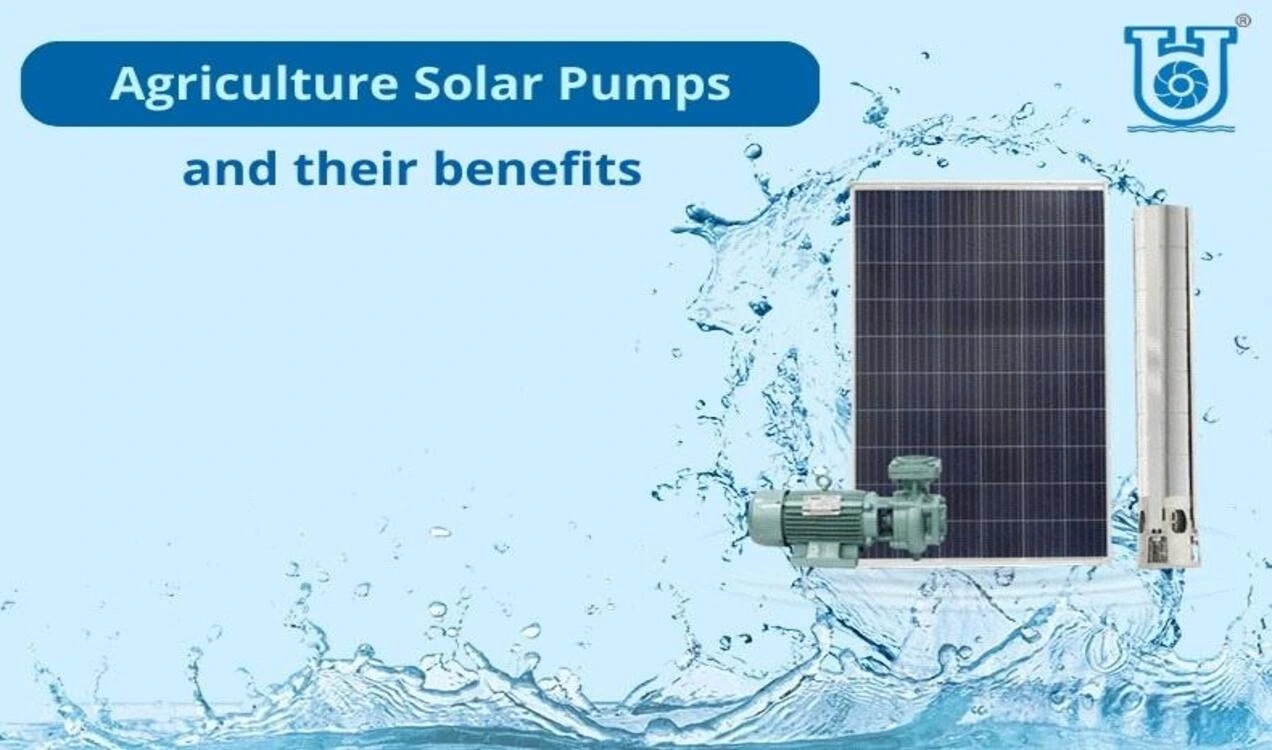Solar pumps are an innovative and sustainable technology that is accumulating popularity in the agricultural sector. With the increased demand for food production and the aim to limit energy costs and environmental damage, solar pumps are becoming a practical alternative to conventional pumps. In this article, we will cover everything you need to know about solar pumps in agriculture, including their variations, benefits, factors to consider when choosing a pump, installation, and maintenance tips, and case studies of successful implementation.
What are solar pumps?
Solar pumps are systems that employ solar energy to move water from a source, such as a well or surface water body, to a desired destination. There are three basic sorts of solar pumps: surface, submersible, and floating. Surface solar pumps are commonly used to pump water from superficial water sources, whilst submersible solar pumps are meant to perform in deeper water. Solar pumps are used to pump water from pools or lakes.
There are several advantages to solar pumps compared to traditional pumps, which are typically powered by electricity or fuel. They are more environmentally beneficial, cost-effective, and sustainable, making them a tempting choice for farmers and agricultural institutions.
Benefits of employing solar pumps in agriculture:
There are several benefits of deploying solar pumps in agriculture, including:
Reduction in energy costs:
Solar pumps are fed by solar energy, which is free and abundant. This removes the need for electricity or fuel, which may be expensive and sensitive to price swings.
Increased productivity and efficiency:
Since solar pumps generally run more efficiently than conventional pumps, this can result in an increase in production. They may continue to work even when the power is off, making ensuring that crops have access to the water they need.
Better water supply in isolated regions:
Solar pumps are particularly beneficial in rural locations where access to energy or fuel may be limited. Consequently, Solar pumps offer an attractive option in countries with limited access to water.
Reduced environmental effect:
Compared to conventional pumps, solar pumps have a lesser environmental impact as they don’t generate any pollutants or impurities.
Considerations for choosing a solar pump for agriculture:
To make sure you obtain the greatest pump for your objectives when choosing a solar pump for agriculture, there are a number of factors to take into consideration. These components comprise:
Crop water needs:
The size and horsepower of the pump you want will depend on the quantity of water that crops demand. Make sure the pump you choose can deliver the water your crops demand.
Pump size and horsepower:
The pump’s size and horsepower should match the quantity of water that your crops need to flourish. If the pump is too immense, it will squander energy and be more expensive; if the pump is too little, it won’t be able to extract enough water.
Size and capacity of the solar panel:
How much electricity the pump can create will depend on the size and capacity of the solar panel. Make sure you choose a solar panel that can effectively power the pump.
Pump Cost:
Analyze the solar pump’s initial cost as well as its probable long-term return on investment. Solar pumps may be a cost-effective solution even though they may have a bigger initial investment than conventional pumps owing to the energy expenditures they may save in the long run.
Solar panels installation and maintenance:
For solar pumps to perform safely and efficiently, suitable installation and maintenance are needed. The following advice will help you install and maintain your pump:
- The right installation techniques: For the necessary wiring and grounding procedures for installing your pump and solar panel, refer to the manufacturer’s instructions. Ensure that the solar panel and pump are firmly grounded.
- Performing periodic maintenance is vital to preserving your solar panel and pump in perfect operating condition. This involves chores like cleaning the solar panel and pump, seeking for leaks, and putting electrical components to the test.
- Fixing frequent issues: If your pump isn’t operating properly, there are numerous typical concerns to check for, such as limited water flow, damaged solar panels, and blockages in the pump or pipes. For troubleshooting recommendations, consult the manufacturer’s instructions or a competent pump technician.
Case examples of solar pumps used in farming successfully:
Numerous farms and agricultural organizations have efficiently adopted solar pumps. For instance, the Solar Electric Light Fund (SELF) has cooperated with farmers in the West African country of Benin to create solar irrigation equipment. Crop yields have grown as a result of the pumps, while dependence on diesel generators has reduced. Solar-powered irrigation devices have been designed especially for small-scale growers in poor countries by various groups.
Solar pumps are a feasible choice for agriculture despite some hurdles, such as initial costs and financing availability, because they boost productivity and are sustainable.
Conclusion:
A cost-effective and ecologically responsible substitute for conventional pumps, solar pumps offer an innovative and long-term solution for agriculture. It is vital to take into consideration elements like the amount of water needed, the pump’s capacity, the power of the solar panels, and cost analysis when choosing and employing a solar pump. For a system to work safely and efficiently, competent installation and maintenance are also required. Farmers and agricultural groups may enhance productivity, cut energy costs, and help secure a more sustainable future by bringing solar pumps into consideration as an option for agriculture.


